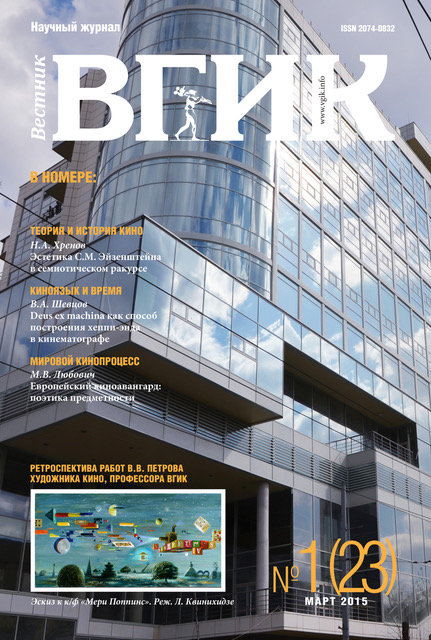“Deus ex Machina” as a Method of Constructing a Happy End in Film Art
- Authors: Shevtsov V.A.1
-
Affiliations:
- VGIK
- Issue: Vol 7, No 1 (2015)
- Pages: 48-58
- Section: FILM LANGUAGE AND TIME | IMAGE GENESIS
- URL: https://journals.eco-vector.com/2074-0832/article/view/14768
- DOI: https://doi.org/10.17816/VGIK7148-58
- ID: 14768
Cite item
Full Text
Abstract
The article deals with a special type of a happy ending when the final well-being is a kind of a surprise or godsend’ that is obtained through no effort of the protagonist. This type of ending deviates from the logic of the classical film narrative’ and is closer to the dramaturgical technique ‘deus ex machina‘. It is shown that the use of this technique looks justified if one of the characters of the movie is an anthropomorphic representative of some higher power.
Keywords
About the authors
Vasily Anatolievich Shevtsov
VGIK
Author for correspondence.
Email: editor@vestnik-vgik.com
postgraduate student of Screenwriting Department
References
- Данелия Г. Тостуемый пьет до дна. Вторая серия // Дружба народов. - 2005, № 8. С. 9-69.
- Индик У. Психология для сценаристов. Построение конфликта в сюжете. - М.: Альпина нон-фикшн, 2014. - 348 с.
- Макки Р. История на миллион долларов: Мастер-класс для сценаристов, писателей и не только. - 3-е изд. - М.: Альпина нон-фикшн, 2011. - 456 с.
- Мариевская Н.Е. Сценарий фильма как модель динамического процесса // Вестник ВГИК. - 2014, № 20. - С. 22-34.
- Разлогов К.Э. От катарсиса к хеппи-энду: метаморфозы античности в массовой культуре // Катарсис: метаморфозы трагического сознания. - СПб.: Алетейя, 2007. - 384 с., [8] с.: ил. - С. 28-32.
- Bordwell D., Thompson К. Film Art. An Introduction. 8th Edition. - New York: McGraw Hill, 2008. - 506 p.
- MacDowell J. Happy Endings in Hollywood Cinema: Cliché, Convention and the Final Couple. - Edinburgh University Press, 2013. -218 p.
Supplementary files








